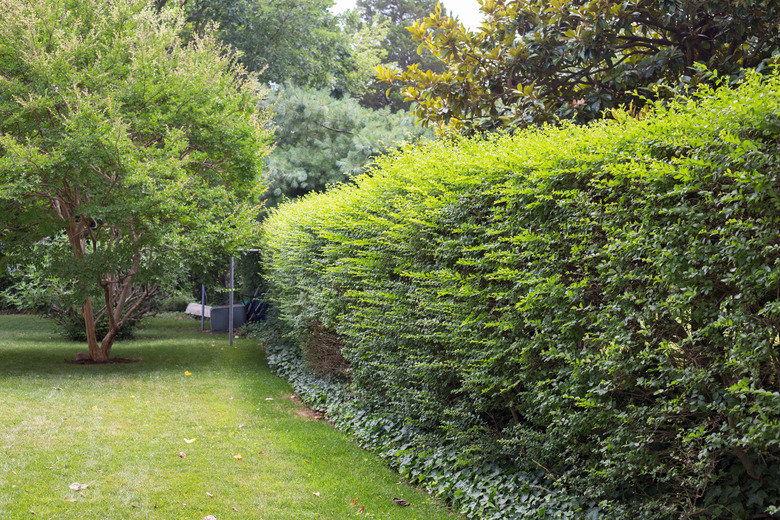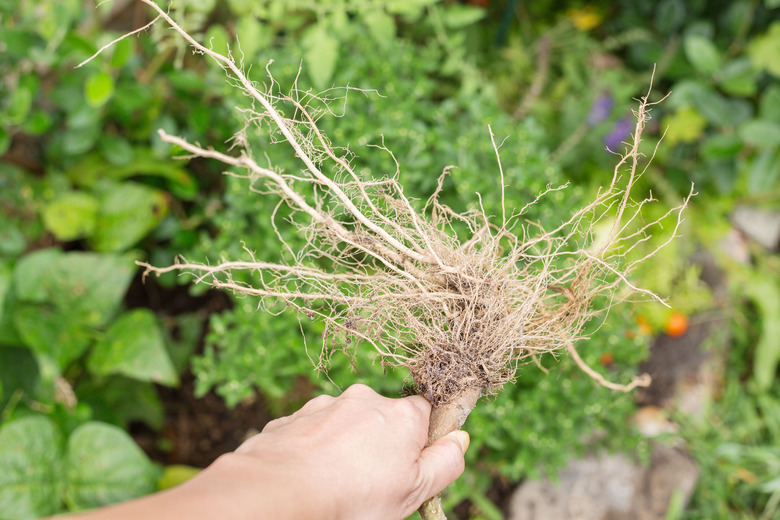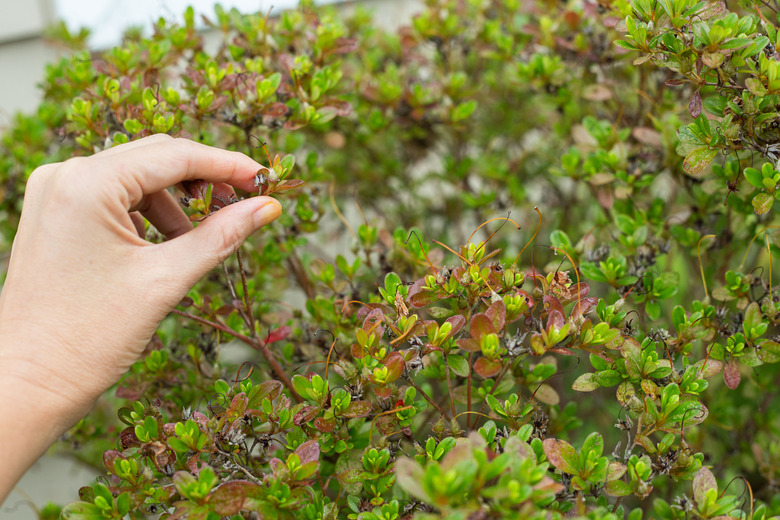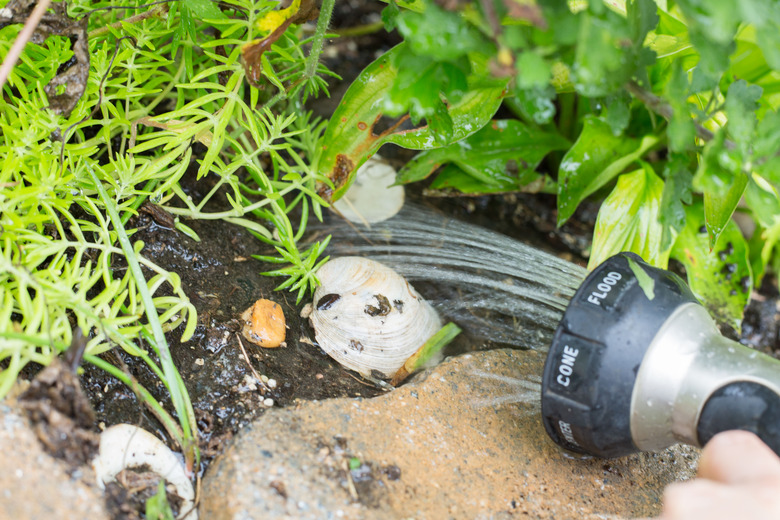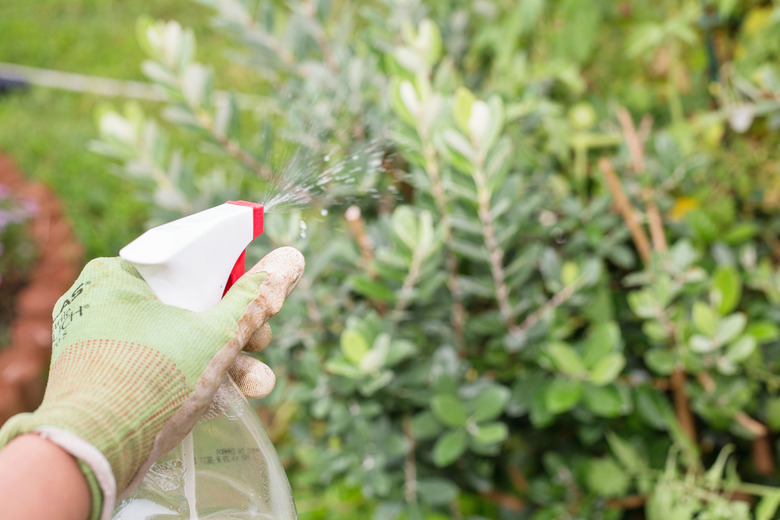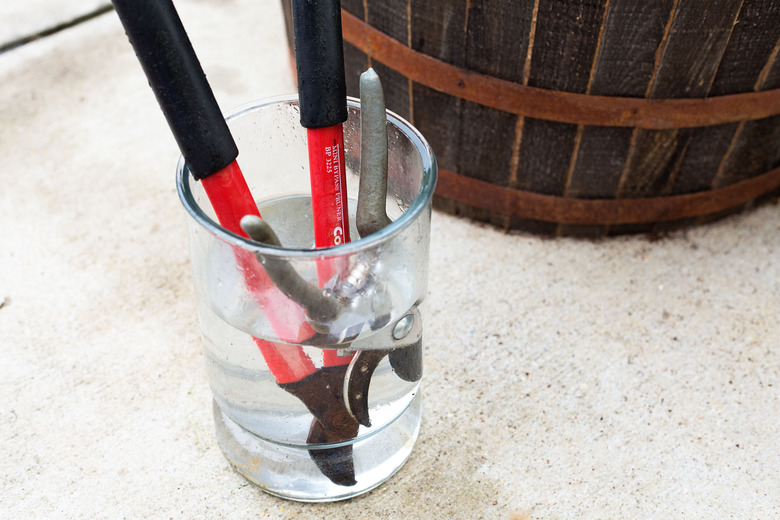How To Diagnose Diseases On Shrubs And Hedges
As with all plants, shrubs are prone to diseases, and when grown together to form a hedge, they can pass these conditions to each other due to their proximity. Diagnosing a disease primarily involves close inspection of all of a plant's parts, and in more serious cases it also may include drastic pruning, performing soil tests or sending samples of plant material to a laboratory for testing.
Inspection Detail
Many shrub diseases are obvious at first glance, producing such symptoms as shriveled, spotted, browning or deformed leaves and limp stems. If you suspect a disease, examine the whole shrub or, if it is part of a dense hedge, as much of it as you can. In such a case, you may have to do some pruning to get at the most seriously affected parts; the act of pruning may help to halt the spread of the disease to nearby shrubs. Inspect roots by digging around them and gently pulling the soil away to expose as much of their surface as you can without damaging them.
Signs of Disease
A common shrub disease, powdery mildew is a fungus that at first produces white spots on leaves. As the spots spread, the leaves and stems become covered in a white, puffy substance that causes the leaves to turn yellow and fall off. Other symptoms to look for include a dark discoloration just under the bark of hedge shrubs such as the boxwood cultivar "Variegata" (Buxus sempervirens "Variegata"), hardy in U.S. Department of Agriculture plant hardiness zones 6 through 8, as well as black or red sap that oozes from the bark, which indicates the fungal disease root and crown rot. Fungal and bacterial diseases also cause yellow or brown leaf spots. Yellow leaves and the death of whole branches could indicate a canker disease.
Possible Solutions
Because fungi and bacteria thrive in wet areas, most fungal and bacterial shrub diseases can be eliminated by controlling the amount of moisture to which all parts of the plants are exposed. When planting new shrubs, select a well-drained area that gets plenty of sunlight. When dealing with established shrubs, improve their drainage by sinking drainpipes vertically into the soil near the shrubs, and always water the plants at soil level rather than from above to keep their leaves as dry as possible. An accurate diagnosis of a root rot disease, which is a fungal disease, is important because most fungicides work against only certain kinds of pathogens, according to the University of Georgia Extension.
Fungicide Applications
Using a solution made from 3/4 to 1 1/2 tablespoons of the fungicide captan mixed with 1 gallon of water, spray both sides of the leaves of plants affected by a fungus for which captan works. Spray all parts of the plants on a dry, windless day for the first application then every seven to 14 days under the same weather conditions until the problem is resolved. An option is to use a spray that contains 1/2 to 2 tablespoons of fixed copper and 1 gallon of water, or drench the soil at the base of the affected plants with a solution of 1/2 to 1 tablespoon of wettable sulfur and 1 gallon of water. Wear suitable clothing when preparing and applying a fungicide; such clothing includes a long-sleeved shirt, long pants, socks, closed-toe shoes, work gloves and protective glasses.
Long-Term Prevention
Shrub problems are more often than not the result of improper planting and care that often set the stage for disease. Preventive measures such as selecting disease-resistant plants and regular pruning go a long way toward assuring that all your shrubs, whether single specimens or as part of a hedge, remain vibrant and problem-free for years. When pruning, remove all dying, dead or infected growth, and destroy it immediately to prevent the spread of disease. Minimize the occurrence and spread of fungal or bacterial diseases by sterilizing all garden tools — before using them — in a solution of 2 tablespoons household bleach and 1 gallon of water. Soak the cutting edges of the tools for 30 minutes in the solution, and then dry them. An alternative is to wipe the tools' cutting edges with pure isopropyl alcohol.
References
- University of Illinois Extension: Hedge Bush Fungus
- University of Georgia Extension: Common Landscape Diseases in Georgia
- University of Minnesota Extension: Pruning Trees and Shrubs
- Clemson University Extension and University of Florida IFAS Extension: Diagnosing Shrub and Tree Problems
- University of California Integrated Pest Management Online: Pests in Gardens and Landscapes — Boxwood, Box, Buxus Spp.
- Clemson Cooperative Extension: Boxwood Diseases and Insect Pests
- Iowa State University Extension, Integrated Crop Management: Fungicides — Safety and Restrictions
- Penn State Extension: Tree, Shrub and Woody Vine Diseases
- Missouri Botanical Garden: Buxus Sempervirens "Variegata"
